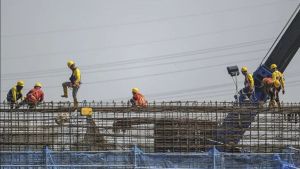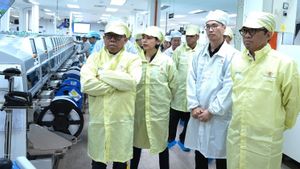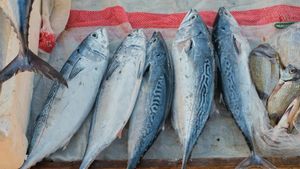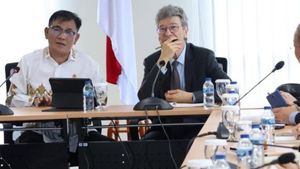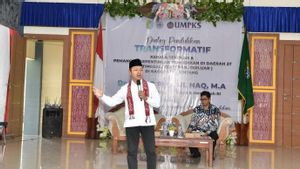JAKARTA - The Sea Toll Program initiated by President Joko Widodo since the beginning of the administration has played an important role in connecting the outermost, frontier, underdeveloped, and border areas (3TP) with major economic centers in Indonesia, which are generally in the West. The Minister of Transportation, Budi Karya Sumadi, said that one of the main goals of the Sea Toll Road is to reduce the disparity of goods prices in various regions, especially in eastern Indonesia, which has so far experienced a significant price difference compared to the western region.
"With the sea highway, the price of basic goods can fall by 30 percent, especially in the 3TP region. This is very helpful in reducing inflation and improving people's welfare," he explained in the Dialogue of the 9th Merdeka Barat Forum (FMB9) which raised the theme '10 Years Connecting Indonesia for Justice Equity', Monday 30 September.
This achievement is inseparable from a significant increase in connectivity. Currently, the Sea Toll Road has connected 115 ports throughout Indonesia with 39 active routes, accelerating the distribution of goods to various areas that were previously difficult to reach.
According to Budi, the Sea Toll Road creates equitable distribution of goods in previously isolated areas. For example, people in Papua and Maluku who used to have difficulty getting basic necessities, can now get goods at a more stable and affordable price.
This Sea Toll Program also plays an important role in developing small and medium industries (SMEs) in these areas. According to him, products such as fish from Maluku, seaweed from Nusa Tenggara, to rice from Merauke can now be distributed more easily throughout Indonesia.
The Sea Highway also plays a role in encouraging economic growth in 3TP areas. In some areas, such as NTT and Papua, although still holding the status of the poorest area, sea highways have opened up new economic opportunities.
Kupang, for example, now has small industries that grow along with the ease of distribution access provided by the Sea Toll Road. This is an important first step in reducing the development gap between regions," said Budi.
With the achievements that have been achieved over the past 10 years, the Sea Toll program is expected to continue to be expanded and improved. The government plans to add new routes and strengthen national logistics integration with the Sea Toll Road.
"We are targeting additional routes of up to 10-25 percent in the next few years, especially for areas that are still not optimally affordable," he hoped.
Even though the sea highway has had a big positive impact, it must be admitted that there are still challenges that need to be overcome. The Director General of Domestic Trade at the Indonesian Ministry of Trade, Moga Simatupang, said that one of them was a matter of backload.
He explained that the ships that sent goods to the eastern region often returned with empty cargo, which ultimately increased logistics costs.
"We need to work with local governments and local business actors to optimize the potential of regional products that can be transported as a counter-charge," said Moga.
According to him, areas such as Papua, Maluku, and NTT actually have a lot of potential, such as fishery products and agricultural products. If the local government can map the potential of its superior products, then these products can be optimized as a counterload for the Sea Toll ship, which of course will reduce overall logistics costs.
As an effort to make this happen, the Ministry of Trade presents a Maritime Outlet Information System (SIGM) program to encourage the development of local products as part of the use of the Sea Toll Road. This program helps identify superior products from areas served by the Sea Toll Road and facilitates distribution of goods to domestic and international markets.
In addition, Maritime Outlets also encourage small and medium enterprises (SMEs) in the regions to actively participate in inter-island trade. This creates new economic opportunities and increases the competitiveness of local products in the national market.
Sea Tolls are not only distribution channels, but also links for business actors to sell their products to a wider area, said Moga.
The English, Chinese, Japanese, Arabic, and French versions are automatically generated by the AI. So there may still be inaccuracies in translating, please always see Indonesian as our main language. (system supported by DigitalSiber.id)



